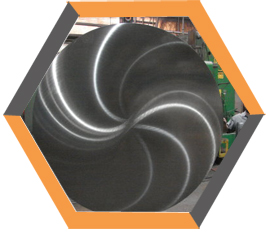Grinding
You Are Here -> Home ->Steel Plate->Steel Plate Processing -> Steel Plate Grinding
steel plate Suppliers
steel plate Stockists
 Grinding is a subset of cutting, as grinding is a true metal-cutting process. Each grain of abrasive functions as a microscopic single-point cutting edge, and shears a tiny chip that is analogous to what would conventionally be called a “cut” chip (turning, milling, drilling, tapping, etc.). However, among people who work in the machining fields, the term cutting is often understood to refer to the macroscopic cutting operations, and grinding is often mentally categorized as a “separate” process. This is why the terms are usually used separately in shop-floor practice, even though, strictly speaking, grinding is a subset of cutting.
Grinding is a subset of cutting, as grinding is a true metal-cutting process. Each grain of abrasive functions as a microscopic single-point cutting edge, and shears a tiny chip that is analogous to what would conventionally be called a “cut” chip (turning, milling, drilling, tapping, etc.). However, among people who work in the machining fields, the term cutting is often understood to refer to the macroscopic cutting operations, and grinding is often mentally categorized as a “separate” process. This is why the terms are usually used separately in shop-floor practice, even though, strictly speaking, grinding is a subset of cutting.
The most common types of metal grinding include surface grinding, center less grinding, double-disc grinding, and honing.
Surface grinding
is also referred to as reciprocal grinding or Mattson grinding. Surface grinding uses a rotating abrasive wheel to remove material, creating a flat surface. The tolerances that are normally achieved with grinding are ± .0004 inches for grinding flat materials. The surface grinder is composed of an abrasive wheel, a workholding device known as a chuck, either electromagnetic or vacuum, and a reciprocating table. Typical work piece materials include cast iron, carbon, and alloy steels. These materials do not tend to clog the grinding wheel while being processed. Aluminum, stainless steel, brass and some plastics may be surface grinding products, however the practice if far less common.
Manufacturers often grind mounting plates or base plates where flatness is a significant factor in holding manufacturing tolerances.
Centerless grinding
is also referred to as Blanchard grinding or cylindrical grinding. Centerless grinding is when the work piece is supported by a blade instead of by centers or chucks. Two wheels are used. The larger grinding wheel is used to grind the surface of the work piece and the smaller wheel is used to regulate the axial movement of the work piece.
Double Disc Grinding
uses two abrasive discs to remove even stock on two opposite and parallel sides of the work piece. The grinding of two sides, simultaneously, reduces handling and reduces grinding time, speeds production and provides consistency over the entire run of parts.
Honing
is a process using abrasive polishing stones to remove small amounts of materials to achieve precise inner diameter tolerances and improve surface finishes. Normal stock removal is .006″ to as much .125″ depending on the bore size of the tube. Other machining processes precede honing when larger amounts of materials need to be removed.
Typical honing applications are the finishing of cylinders for internal combustion engines, air bearing spindles and gears. There are many types of hones but all consist of one or more abrasive stones that are held under pressure against the surface they are working on.


